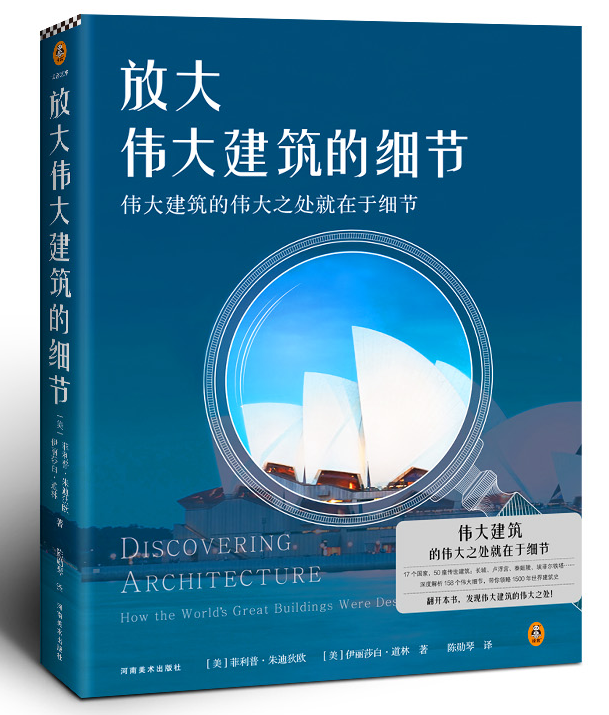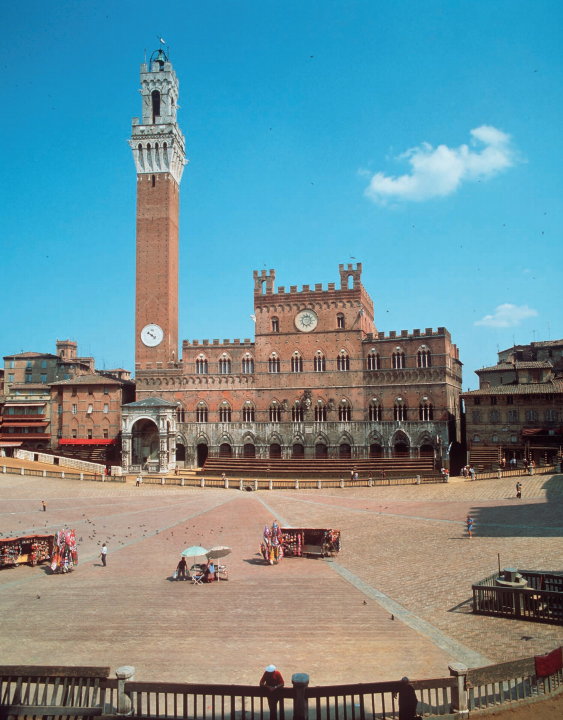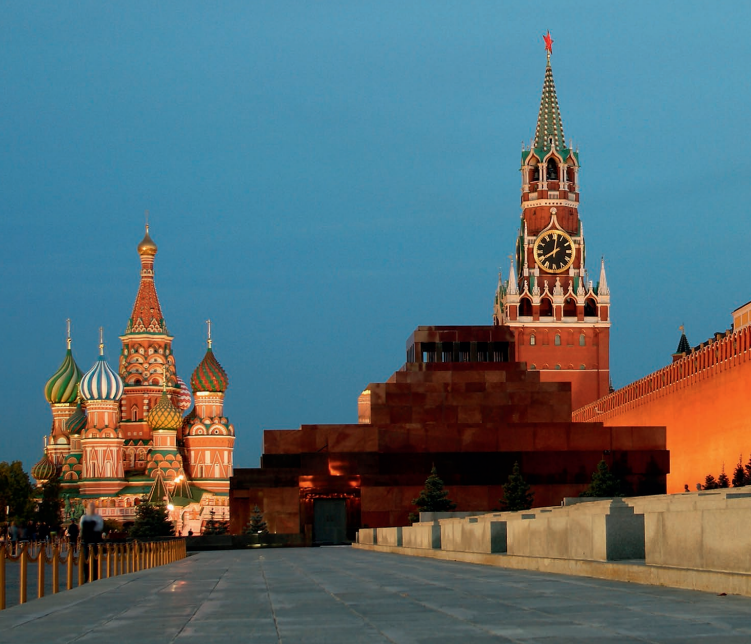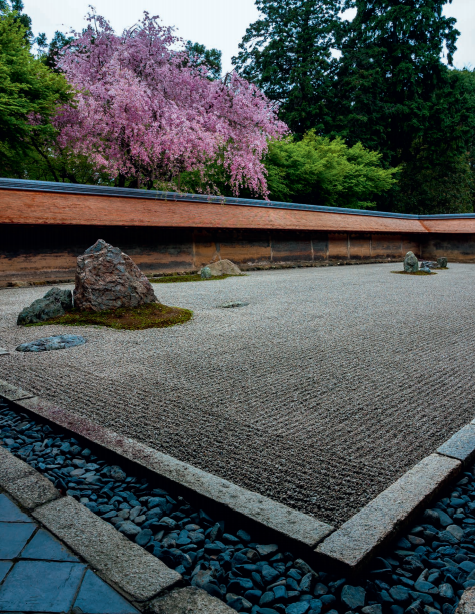Reading | Watch 50 handed down buildings -the greatness is "details"
Author:Report Time:2022.09.13

"Details of Great Buildings"
[Beauty] Philip Judyo Elizabeth Daolin
Chen Xunqin Translation
Reader Culture | Henan Fine Arts Publishing House published in 2022
This book has stated the detailed explanations of 50 handed down buildings in 17 countries around the world. From the Great Wall of China, the Eiffel Tower in France to the Taj Maharma in India. It has a history of more than 2000 years. Rich pictures and detailed explanations enable readers to appreciate the past and present buildings, and at the same time, they can further understand the technical achievements and aesthetic glory of architects.
>> Selected reading in the text:
Preface
In terms of architecture, it has surpassed the house, including excellent public spaces such as Moscow's Red Square, as well as works from the Great Wall of China to the Mimo viaduct from China to France. From the Renaissance of Italy, or from some Gothic -style works, the designer of the structure gradually left the name and was remembered by later generations. Early buildings are undoubtedly a solution that one or more people think of, and the performance of individuals is integrated into the group's achievements. However, with the emergence of characters such as Albetti, Brunery, and Michelangelo, architects were regarded as "geniuses". Naturally, visitors of Beijing Forbidden City will not inquire about who the architect is, because, it is obvious that it is a generation of ruler in accordance with their needs or wishes to add and reduce cutting, creating this gorgeous palace. The same is true of Versailles Palace. The use of great buildings will change at any time, even if this change is at the cost of killing the achievements of the old age. For centuries, the French king and the ruler of the elected election have repeatedly transformed the Louvre. It is this rich historical level that has made this palace the heart of the country.

Versailles (France, about 1670 years)
On November 16, 1972, the UNESCO Congress passed the Convention on Protecting the World Culture and Natural Heritage. As of 2012, a total of 745 cultural sites in the world have been included in the protected list by textbooks. Many of the buildings in this book have been entered into the World Heritage List of UNESCO. This is undoubtedly a valuable source of information, and it does protect historical sites that may be removed by urban development. The UNESCO's "World Heritage List" even shows that people's views on old buildings have a fundamental reversal. In the past, whether the structure reserved or transformed depends only on its practical value. Nowadays, as long as the building is in modern times, it will be retained regardless of the state, although most of them will not be rebuilt, repaired or upgraded. In this sense, important buildings have entered their museum stage, and endless tourists are looking forward to the glory of Rome and Beijing in another historical time and space. This transition to the museum stage is obviously a sociological phenomenon based on the convenient world travel. It is also the result of fundamental changes in the design and construction of things.
This book has selected 50 cases -from the beginning of AD to the present -the most important observation may be: each of them is full of vitality. These architectural cases are far from being curious but unable to get close to art, but the place where our civilization depends. Therefore, the great building is not exclusive to individual elites. Where is we from and who we are.
Importance of public space
Usually, urban squares are not considered architectural works in terms of itself. However, the importance of successful public spaces can weigh the surrounding buildings, and itself has become an indispensable part of urban life. Of course, there are some square cases designed by architects or planners -everyone naturally think of the "pilot plane" designed by Lucio Costa in 1957. The cities' commemorative shaft is the green main axis between government buildings. It is a great public space and a necessary urban design element.
Tianye Square (Siena, Italy; 1280-1350) is the main public space of the Tuscana area of the Tuscana area. This shell-like semi-circular square is unusual. The lower side of the terrain is the city hall built in 1297-1308; the high side of the terrain is a series of high private palaces (palaces). Before the 13th century, the area where the square was located was used as a market in several towns. The harmony and beauty of Tianye Square rely on the coordination control of the architect, but also because the buildings around it follow a set of standards and styles of the building height and style around the square.

Tianye Square (Siena, Italy, 1280-1350)
The red field in front of the Kremlin in Moscow was constructed in accordance with the order of Ivan III (1440-1505). The building within 234 meters away from the Kremlin was cleared. The main streets of the Russian capital have spread out from this square, highlighting its symbolic significance. In modern times (including the Soviet Union), many official ceremonies in here have confirmed this. Red Square is one of the most famous public spaces in the world. In view of its historical status, this square is protected by Russia and UNESCO. An architect contributed a partial design to the Red Field. However, as a whole, the square surpassed the individual's ideas and became the core symbol of the country. After a few centuries, the red field may be regarded as a collective architectural design. Or take its fundamental meaning, a nation and its historical expression. The great building surpasses stone and decoration. Major events are staged here, and thoughts are formed. Red Square (Moscow, Russia, 17th century)

Universal
Architects may hesitate whether to include gardens in a book about buildings. However, one of the real methods of the outstanding nature of the product is to measure how it uses space, or how it creates a space that can be used and maintained for several centuries. The garden of Longan Temple (Kyoto, Japan; about 1500 years) is a garden with dry landscapes, or Japanese dry landscapes (also known as "withered landscape"). In other words, unlike most gardens, it is only composed of mineral elements. This garden consists of rated gravel and 15 moss stones. The garden of Long'an Temple is only viewed and does not walk through. People can only meditate on the form of a long, polished wooden bar on the temple. The carefully layout of the stones show the eternity of life and the unknown ambiguousness. Garden can also be regarded as metaphors in existence and even the universe. If the building can be enlightened, what should it look like? Of course like this garden.
Garden of Long'an Temple (Kyoto, Japan, 16th century)

The Palace of Versailles (Versailles, France; about 1670) can be said to be opposite to Longan Temple. The Versailles Palace, the most talented architect, artist, furniture designer, and landscape designer at that time, reflecting far more than the personal ability of the masters, but also a symbol of the era. For example, a magnificent landscape created by the landscape architect Andre Le Norter, which is the most striking element in various gardens in Versailles. Strangely, the palace of Versailles is brilliant, but the garden can be regarded as a kind of minimalism, far beyond the "earth art" of that era. The real art of Le Norter is that he has an ability to create a power image that penetrates the horizon with the earth, water and sky, as if the real power lies in the absolute control of space, not political or military forces. The conclusion is obvious that the elements designed by Le Norter are still there, and the kings of France have long been diligent in the fate.
Author: [Beauty] Philip Judyo Elizabeth Daolin
Edit: Yuan Yuanlu
Editor in charge: Zhu Zilong
- END -
Zhaoyuan people sweep the grave for the young handsome Zhang Xueliang

General Zhang Xueliang's life left us a rich spiritual wealth. We must adhere to h...
Li Qingzhao and Xin Qiji's words are gentle and unrestrained. Does the two have the same place between the two?

In the Song Dynasty, there are well -known Jinan Er'an, namely You'an Xin Qiji and...